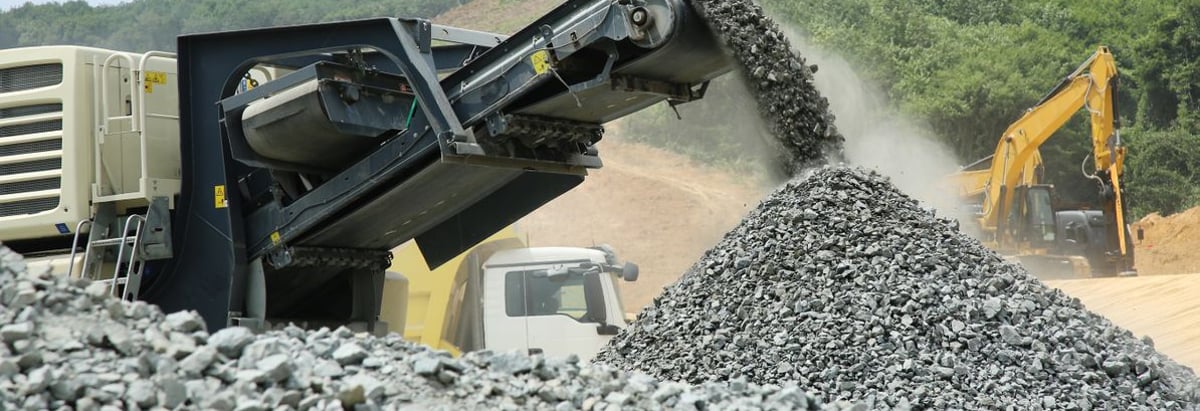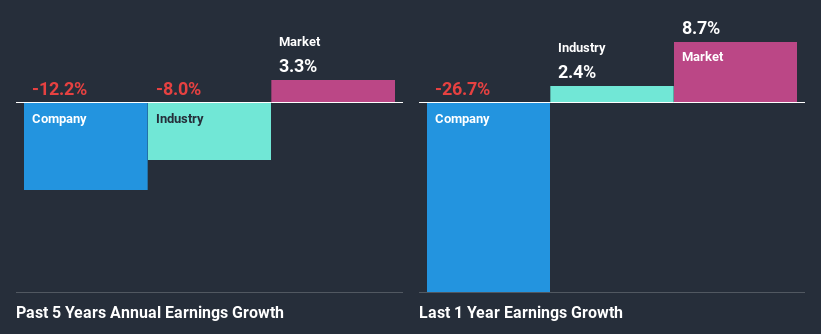Stock Analysis
- South Korea
- /
- Basic Materials
- /
- KOSDAQ:A038500
SAMPYO Cement Co., Ltd.'s (KOSDAQ:038500) Financials Are Too Obscure To Link With Current Share Price Momentum: What's In Store For the Stock?

SAMPYO Cement (KOSDAQ:038500) has had a great run on the share market with its stock up by a significant 43% over the last three months. However, we decided to pay attention to the company's fundamentals which don't appear to give a clear sign about the company's financial health. In this article, we decided to focus on SAMPYO Cement's ROE.
ROE or return on equity is a useful tool to assess how effectively a company can generate returns on the investment it received from its shareholders. Put another way, it reveals the company's success at turning shareholder investments into profits.
See our latest analysis for SAMPYO Cement
How Do You Calculate Return On Equity?
The formula for return on equity is:
Return on Equity = Net Profit (from continuing operations) ÷ Shareholders' Equity
So, based on the above formula, the ROE for SAMPYO Cement is:
2.1% = ₩14b ÷ ₩643b (Based on the trailing twelve months to December 2020).
The 'return' refers to a company's earnings over the last year. That means that for every ₩1 worth of shareholders' equity, the company generated ₩0.02 in profit.
What Is The Relationship Between ROE And Earnings Growth?
So far, we've learned that ROE is a measure of a company's profitability. We now need to evaluate how much profit the company reinvests or "retains" for future growth which then gives us an idea about the growth potential of the company. Assuming all else is equal, companies that have both a higher return on equity and higher profit retention are usually the ones that have a higher growth rate when compared to companies that don't have the same features.
SAMPYO Cement's Earnings Growth And 2.1% ROE
It is quite clear that SAMPYO Cement's ROE is rather low. Not just that, even compared to the industry average of 4.4%, the company's ROE is entirely unremarkable. Given the circumstances, the significant decline in net income by 12% seen by SAMPYO Cement over the last five years is not surprising. We believe that there also might be other aspects that are negatively influencing the company's earnings prospects. For example, the business has allocated capital poorly, or that the company has a very high payout ratio.
Next, when we compared with the industry, which has shrunk its earnings at a rate of 8.0% in the same period, we still found SAMPYO Cement's performance to be quite bleak, because the company has been shrinking its earnings faster than the industry.

Earnings growth is an important metric to consider when valuing a stock. It’s important for an investor to know whether the market has priced in the company's expected earnings growth (or decline). By doing so, they will have an idea if the stock is headed into clear blue waters or if swampy waters await. One good indicator of expected earnings growth is the P/E ratio which determines the price the market is willing to pay for a stock based on its earnings prospects. So, you may want to check if SAMPYO Cement is trading on a high P/E or a low P/E, relative to its industry.
Is SAMPYO Cement Using Its Retained Earnings Effectively?
When we piece together SAMPYO Cement's low three-year median payout ratio of 21% (where it is retaining 79% of its profits), calculated for the last three-year period, we are puzzled by the lack of growth. The low payout should mean that the company is retaining most of its earnings and consequently, should see some growth. It looks like there might be some other reasons to explain the lack in that respect. For example, the business could be in decline.
Only recently, SAMPYO Cement stated paying a dividend. This likely means that the management might have concluded that its shareholders have a strong preference for dividends.
Summary
On the whole, we feel that the performance shown by SAMPYO Cement can be open to many interpretations. While the company does have a high rate of profit retention, its low rate of return is probably hampering its earnings growth. Wrapping up, we would proceed with caution with this company and one way of doing that would be to look at the risk profile of the business. You can see the 4 risks we have identified for SAMPYO Cement by visiting our risks dashboard for free on our platform here.
If you’re looking to trade SAMPYO Cement, open an account with the lowest-cost* platform trusted by professionals, Interactive Brokers. Their clients from over 200 countries and territories trade stocks, options, futures, forex, bonds and funds worldwide from a single integrated account. Promoted
New: Manage All Your Stock Portfolios in One Place
We've created the ultimate portfolio companion for stock investors, and it's free.
• Connect an unlimited number of Portfolios and see your total in one currency
• Be alerted to new Warning Signs or Risks via email or mobile
• Track the Fair Value of your stocks
This article by Simply Wall St is general in nature. It does not constitute a recommendation to buy or sell any stock, and does not take account of your objectives, or your financial situation. We aim to bring you long-term focused analysis driven by fundamental data. Note that our analysis may not factor in the latest price-sensitive company announcements or qualitative material. Simply Wall St has no position in any stocks mentioned.
*Interactive Brokers Rated Lowest Cost Broker by StockBrokers.com Annual Online Review 2020
Have feedback on this article? Concerned about the content? Get in touch with us directly. Alternatively, email editorial-team (at) simplywallst.com.
About KOSDAQ:A038500
SAMPYO Cement
Engages in the manufacture and distribution of cement in South Korea.
Solid track record with mediocre balance sheet.

